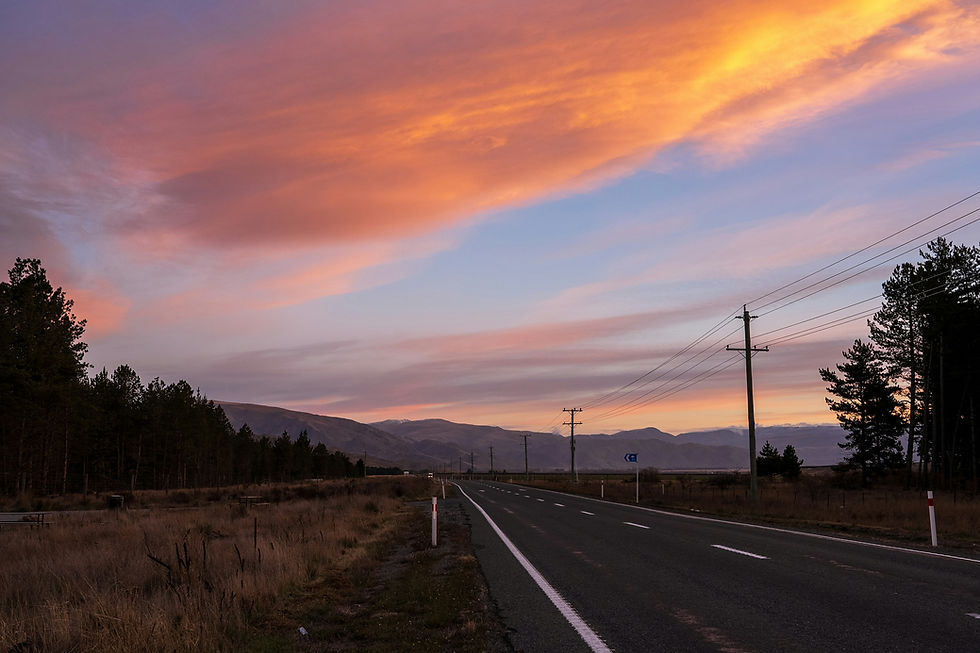Waitangi Day - my reflections
- Our Words Matter
- Feb 5, 2020
- 4 min read
Written by Stacey Shortall
While I acknowledge that Waitangi Day stirs different emotions and reactions for the many different people who live in Aotearoa New Zealand, it carries some personal significance for me this year. Specifically it marks 25 years since I left our country for Canada to study for a masters of law in indigenous self-government.
Perhaps even nowadays this might raise a few eyebrows but, believe me, in 1995, as a young Pakeha woman born and raised in a farming community, it was an uncommon thing to do. Arguing that Māori never relinquished self-governing powers under the Treaty of Waitangi, and that there was a legal basis for the realisation of Māori self-governance, was even considered somewhat radical in certain quarters. Advocating that recognition of the Māori right to self-govern could help counter the historic injustice of denying Māori their peoplehood had the potential to be labeled as controversial.
But there was no shortage of controversy in 1995.
In my early 20s, fresh out of Victoria University in Wellington, I watched the storm clouds of Treaty protests circling as I packed my bags to head offshore. Wanganui’s Moutoa Gardens had been occupied for months, as had Takahue School in Northland. Not long before a lone pine on One Tree Hill in Auckland had been chopped down, and the America’s Cup would soon find itself facing a sledgehammer.
The storm clouds grew even angrier when the government of the day announced its “fiscal envelope” and sought to limit the monetary value of Treaty settlements to $1 billion over ten years. I still remember sitting on the couch in my Aro Valley varsity flat watching a heated exchange between several other students about that initiative. The outrage felt by those opposed to the proposal seemed only matched by those in support of it.
While the views that I recall seemed firmly divided along racial lines, with the benefit of hindsight, I see they were also firmly divided by awareness and education. For deeply disturbing parts of our country’s history were largely unknown in some New Zealand communities back in 1995. I had certainly never heard about horrors like the forced removal and cruel mistreatment of people at Parihaka in 1881. Raupatu - the confiscation of Māori land and how it was done - was still relatively misunderstood in some parts of our country.
As I waited at Auckland airport to board my flight to Canada in 1995, staring down at my scuffed doc martins, I recall overhearing a similarly misinformed and disturbing conversation between several other passengers about establishment of the Office of Treaty Settlements or OTS. Set up to negotiate and implement settlements of historic Treaty claims, talkback radio already was alight with strong vitriol about how OTS would effectively enable the country’s coffers to be bled dry. That sentiment was clearly and loudly shared by these fellow passengers.
Yet roll forward 25 years, with Treaty settlement spending reportedly over $2.4 billion and not yet final, our public purse is not only intact but settlements have enabled substantial growth in Maori investments. The strengthening of our economy is reflected in multi-billion dollar iwi asset bases of the likes of Ngai Tahu and Waikato-Tainui. A fuller and more accurate account of New Zealand history will soon be taught in our schools. The appreciation of te reo and te ao Māori has greatly grown.
Without doubt, much progress has been made.
Yet Waitangi Day 2020 has caused me to reflect on some perhaps naive and idealistic views that I held in 1995. Back then I believed that the greater recognition of Māori rights was inevitable, and close, such that Māori would only ever further prosper.
It never occurred to me that – a quarter of a century later – such a reality would still be in the distant making.
Even with the principles of partnership, participation and protection now seen – by at least some – as underpinning the relationship between the Crown and iwi under the Treaty of Waitangi, there is still so much work to be done. Notwithstanding establishment of the Maori Crown Relations: Te Awawhiti ministry to progress the Crown/iwi relationship beyond grievances to partnerships, there is still so much inequity to overcome.
We all know the sobering statistics: although only around 15% of New Zealand’s current population is Māori, they make up 50% of our overall prison population. Head into our women’s prisons and that percentage skyrockets to 63%. Most distressingly, reports calculate that one in every 142 Māori (compared to one in every 808 non-Māori) is currently in prison.
Other reports indicate that Māori make up 26% of mental health service users. Their life expectancy is markedly lower than non-Māori. Studies show that Māori and Pasifika children including youth are twice as likely to live in poverty. They are considerably less likely to own a home. Figures released by the Children’s Commissioner just last month showed Māori babies were 5 times more likely to end up in state care than non-Māori babies in 2019.
I fully recognise that many in our country have waited far longer than a quarter century to see their hopes for Māori delayed or dashed. I also freely acknowledge that I lament the inaccuracy of my predictions from a position of privilege and comfort. Yet I feel them deeply all the same. As I suspect do many others in our country. But I am not yet prepared to let go of my hope. I just desperately wish to see it realised sooner than in another 25 years.







Comments